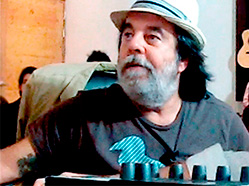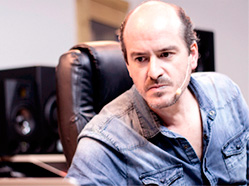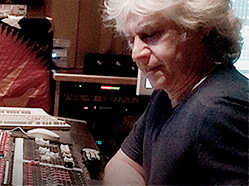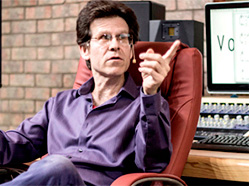vonkelemen premium
Miles de vídeos HD con los secretos mejor guardados de los VonKelemen Master Instructors.
Aprende con los profesionales más importantes y relevantes del mundo,
granadores de múltiples premios Grammy y Billbord

más info
Moogie Canazio
Nathan East, Ray Charles, Sarah Vaughan, Dionne Warwick, Luis Miguel, Caetano Veloso, Eric Clapton, Diana Ross, Selena, Tom Jobim, João Gilberto, Maria Bethânia, Ivan Lins...

más info
Rafa Sardina
Stevie Wonder, D'Angelo, Lady Gaga, Celine Dion, Cristian Castro, Michael Jackson, Alejandro Fernandez, Mariah Carey, Plácido Domingo, Illya Kuriaki & The Valderramas, Shakira...

más info
Sebastian Krys
Sergio Dalma, Eros Ramazzotti, Sandy e Junior, Gloria Estefan, Carlos Vives, Shakira, Alejandro Sanz, Luis Fonsi, Vega, Kinky, Los Rabanes, Obie Bermúdez, Ricky Martin...

más info
Benny Faccone
Santana, Sting, Michael Jackson, Stevie Wonder, Dizzy Gillespie, Whitney Houston, Luis Miguel, Ricky Martin, Los Fabulosos Cadillacs, Maná, Barbra Streisand, Patti LaBelle...

más info
Peter Doell
Toto, War, Elton John, The Beach Boys, Celine Dion, Hans Zimmer, Ray Charles, Miles Davis, Marilyn Manson, R.E.M., Ben Harper, Tom Jones, Adam Lambert, Chuck Berry, Lynyrd...

más info
Colin Liebich
Brian Vibberts (ganador de múltiples premios Grammy), CJ Vanston (Productor de Toto, Chic Corea, Spinal Tap), Billy Sheehan...

más info
Brent Fischer
Usher, Paul McCartney, Robert Palmer, D’Angelo, Joao Gilberto, Carlos Santana, Raphael Saadiq, Michael Jackson, Prince, Al Jarreau, Toni Braxton, Eric Benet...
| Mensual | Anual |
|---|---|
| $29/mes | $290/año |
| Acceso ilimitado a todo el contenido PREMIUM |
Acceso ilimitado a todo el contenido PREMIUM |
| Contrato anual, facturado mensualmente |
Contrato anual, prepagaso |
| Suscribirme | Suscribirme |
| $29/mes | $290/año |




































